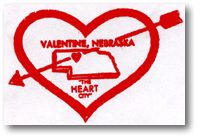By Teri Blair
The Poets, Minneapolis, Minnesota, April 2011, all photos © 2010-2011 by Teri Blair. All rights reserved.
On June 11, 2011, four people will stand on a stage in rural America to debate one question: Does poetry matter?
19 years ago, a man named John Davis started an amateur philosophy contest called the Great American Think-Off. He wanted to give ordinary people a chance to voice their opinions on serious issues. Each year a question is announced in January. People have three months to submit a 750-word essay speaking in favor or opposition to the topic. Four finalists are selected to debate their views before a live audience, an audience who determines the winner. Each of the four receive a $500 cash prize, travel expenses, a medal, and the winner is declared “America’s Greatest Thinker.” John’s two-decade-old idea has flourished. In 2010 (Do the rich have an obligation to the poor?) there were hundreds of entries representing nearly every state.
I was barely awake on January 1st when MPR’s Cathy Wurzer announced this year’s question. I was listening to my bedside clock radio when I heard her say Does poetry matter? My eyes opened in a shot.
I’ve spent a lot of time since that day thinking about the question. Before I started a poetry group, poems didn’t matter that much to me. I admired poets, was in awe of poetry, but it wasn’t until I started reading poetry in earnest that it began to penetrate my life in any meaningful way.
Now I see poetry everywhere: imprinted on the sidewalks of St. Paul, recited in films like Invictus, and incorporated into presidential inaugurations. Poetry distills events of our common human experience into a few words. I’m informed, assured I’m not alone, and given direction. I’ve read Bill Holm’s “Letting Go of What Cannot Be Held Back” dozens of times since my dad died. It gives me permission to set down the pressure to do something about death. I’ve committed May Sarton’s “Now I Become Myself” to memory, saying it over and over as I swim laps at the YWCA, continually calling myself to authenticity.
I knew the day I heard the question that I’d enter the contest. Not to win, but to document what happened in our poetry group. The words fell onto the page, and I felt closure for the group that had been so hard to disband the previous year.
On May 1st I’ll find out if I’m one of the four finalists. I hope I’m chosen, and I really hope I’m not. I want to share what my poetry group discovered, and can’t stand the thought of standing on a stage trying to think on my feet. I wasn’t on the high school debate team for good reason.
I want to hear from you: Does poetry matter? If it doesn’t, were you subjected to obscure passages in high school English class that left you with a bad taste in your mouth? Does poetry seem a lofty and inaccessible pursuit for snobs?
If poetry does matter to you, how come? Do you have a favorite poet?
Whether I’m nervous on the stage (or at ease in the audience), I plan to be at the Think-Off on June 11th. Maybe I’ll see you there.
To read more about the Great American Think-Off: www.think-off.org.
Ted Kooser’s Studio, Dwight, Nebraska (pop. 259), January 2010,
all photos © 2010-2011 by Teri Blair. All rights reserved.
________________________________
About Teri: Teri Blair is a freelance writer living in Minneapolis and founder of the Poetry & Meditation Group of which QuoinMonkey has fondly and frequently written. (See Letter From Poet Elizabeth Alexander for the last post on the group and Teri’s piece titled Desire And A Library Card — The Only Tools Necessary To Start A Poetry Group for a step-by-step on how to start your own.)
Teri’s first red Ravine guest post, Continue Under All Circumstances, was written on the road during a 2007 trip to Holcomb, Kansas. She journeyed back to Holcomb in 2010 and published a sequel, Back To Holcomb, One Last Time . In March 2010, she wrote Discovering The Big Read , a piece about the largest reading program in American history. Its mission is simple: to restore reading to the center of American culture.
Teri spent February 2011 with visiting writers and artists at the Vermont Studio Center, walking, writing, and finding inspiration by the Gihon River in the heart of the Green Mountains. Her last piece for red Ravine, Emily’s Freedom, is a photo essay about what she learned on a writing pilgrimage to Amherst, Massachusetts to visit the home of poet Emily Dickinson.




















 The red ink postal stamp from America’s heartland adds a little fuel to the fire of a juicy Valentine’s Day.
The red ink postal stamp from America’s heartland adds a little fuel to the fire of a juicy Valentine’s Day.






















